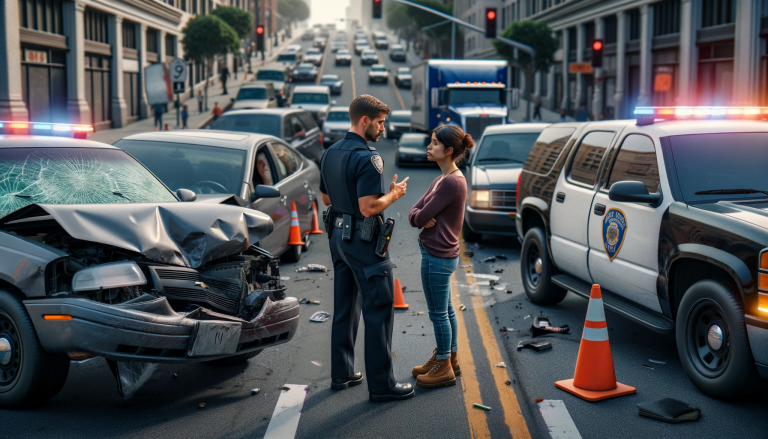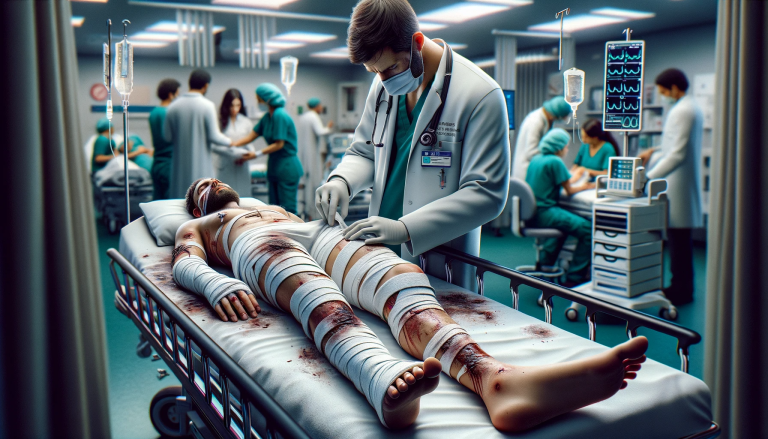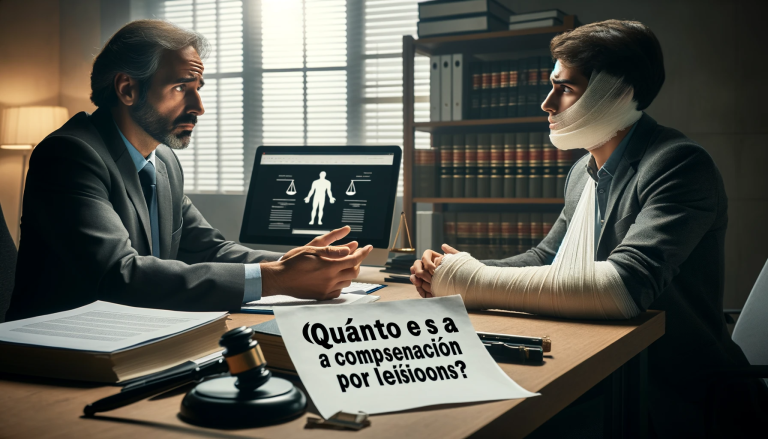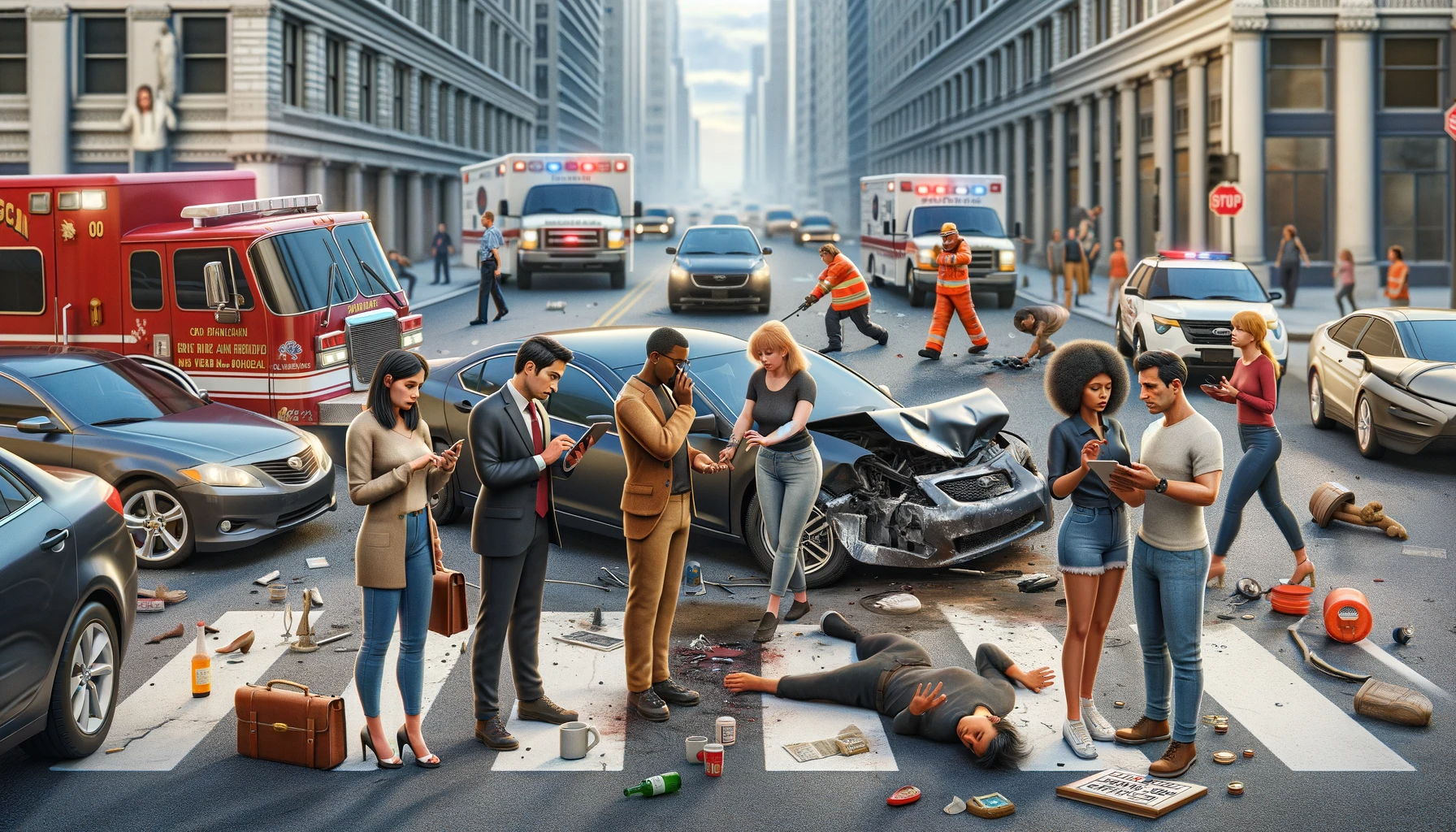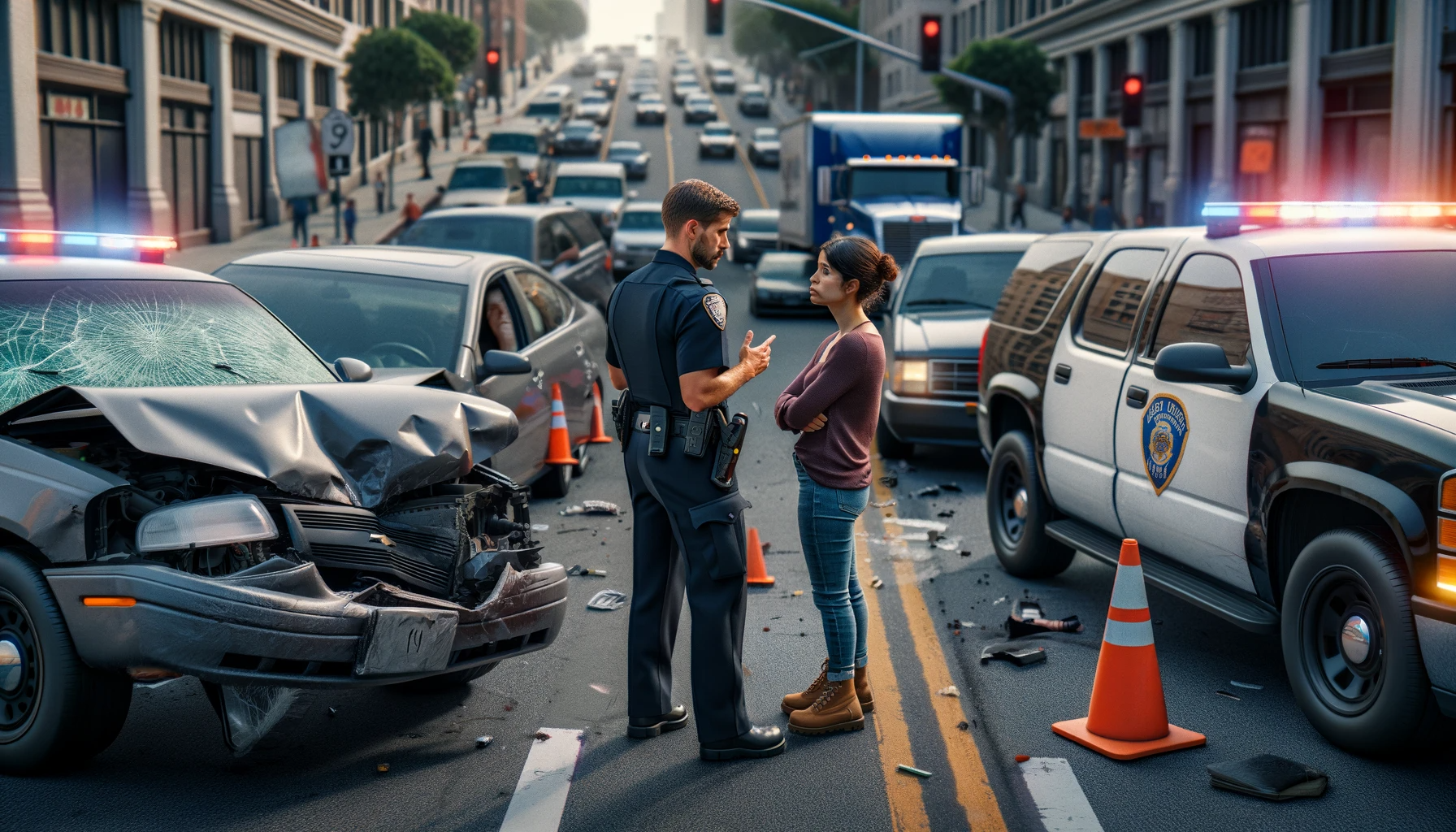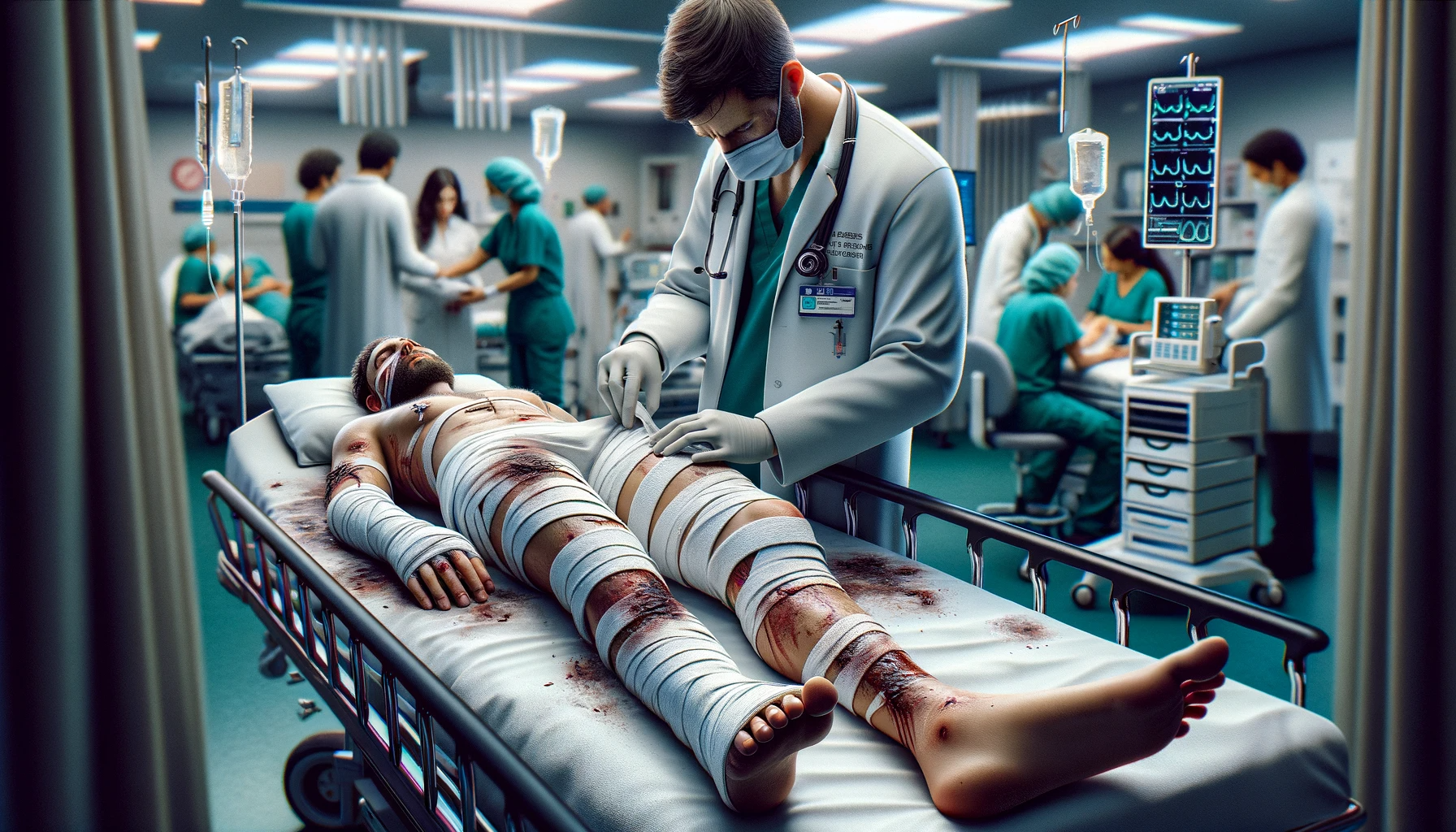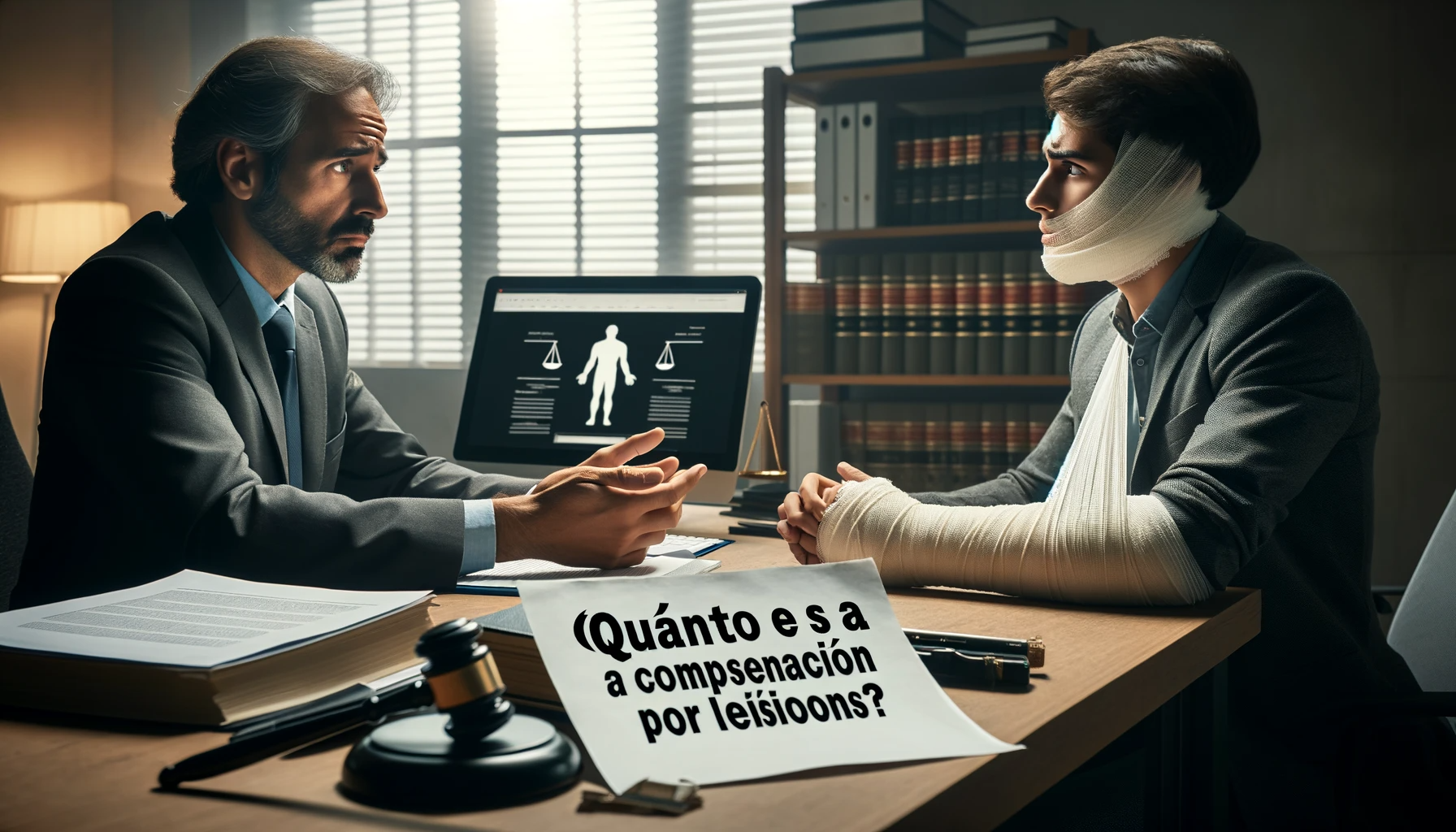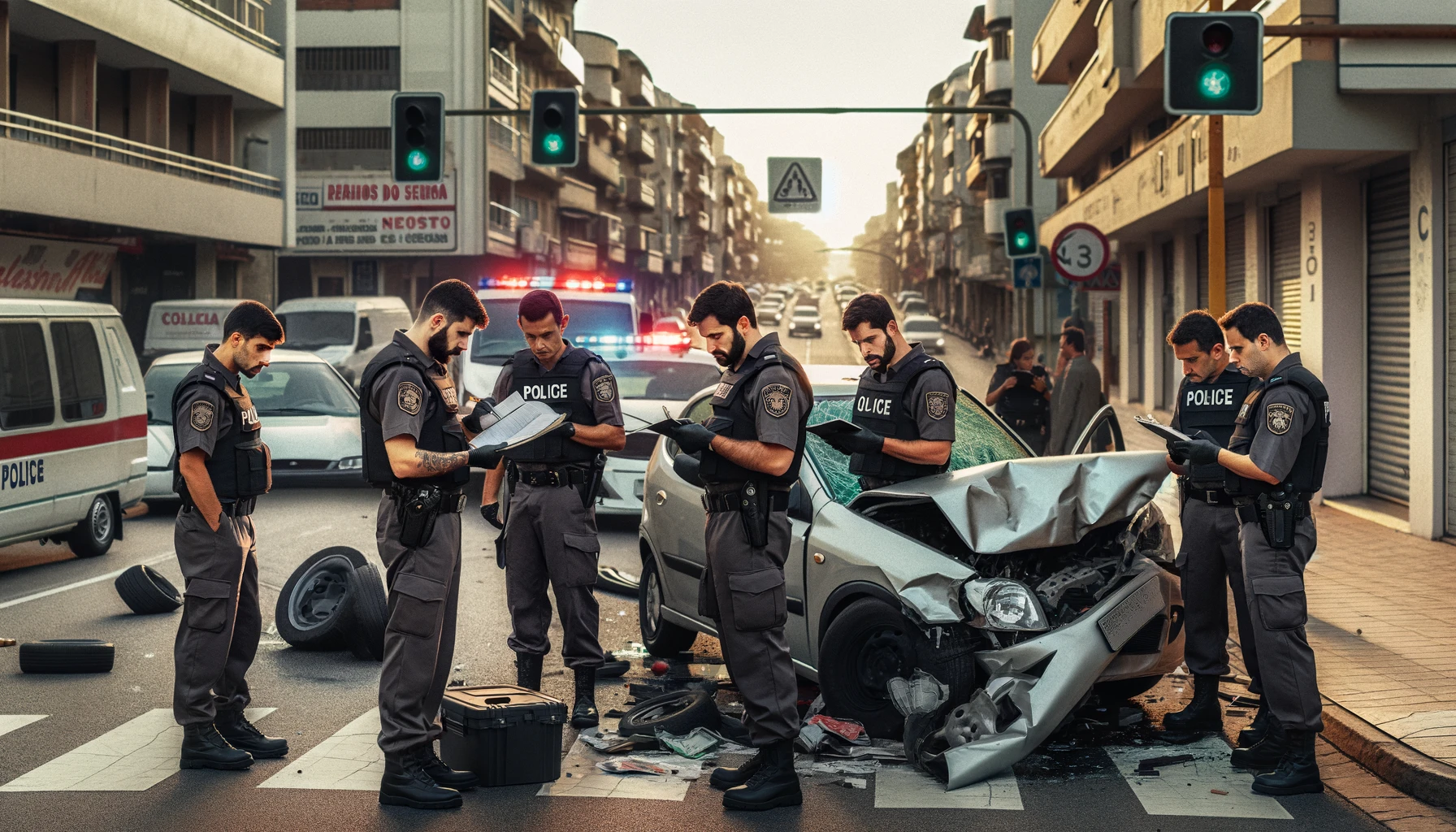Understanding the Basics of Traffic Accidents
Before diving into how to assist someone who has been in a traffic
Accident, it is essential to grasp the basics of what traffic
Accidents are and how they can occur. This will give you an understanding of the potential challenges and risks that may arise during these incidents.
Causes of Traffic Accidents
Traffic
Accidents can be caused by a variety of factors. Some may be due to human errors, such as reckless driving, speeding, drunk driving, and not adhering to traffic rules. Other causes include mechanical failures, poor road conditions, and adverse weather conditions. Understanding these different causes can help when assisting a person involved in such accidents as it provides insight into the possible injuries or hazards at the scene.
The Types of Traffic Accidents
There are various types of traffic accidents, each presenting unique challenges. Some common types include head-on collisions, rear-end collisions, side-impact or "t-bone" accidents, vehicle rollovers, and pedestrian-involved accidents. The type of traffic accident often determines the kind of injuries sustained and the urgency of medical attention required.
The Impact of Traffic Accidents
The impact of a traffic accident can extend beyond physical injuries. Emotional trauma is common among accident victims and can lead to disorders such as post-traumatic stress disorder (PTSD). Mental recovery after an accident can take a long time and require professional therapeutic support. When helping someone involved in a traffic accident, it's important to consider their emotional state as well as their physical wellbeing.
Potential Injuries from Traffic Accidents
Motor vehicle accidents can result in a wide range of injuries, from minor cuts and bruises to severe, life-threatening conditions. Common injuries include fractures, spinal injuries, head and brain injuries,
Burns, and even psychological trauma. Accurate assessment of injuries at the accident scene can make a significant difference in the victim's eventual recovery process.
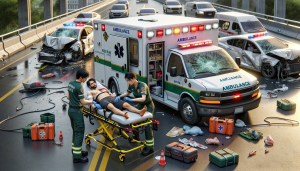
The Role of First Responders
First responders play a critical role in managing traffic accidents. They stabilize the situation, provide immediate care, and facilitate the transfer of victims to medical facilities when needed. In many cases, bystanders may be the first on the scene before professionals arrive, making basic knowledge of first aid and emergency protocols vital.
Steps to Take Immediately After a Traffic Accident
1. Prioritizing Safety
Immediately following a traffic accident, it is crucial to ensure your safety and the safety of others involved. If possible, move the vehicles out of the traffic flow to avoid causing further accidents. However, if moving the vehicle is not possible due to damage or injury, turn on your hazard lights to signal danger to other road users.
2. Checking for Injuries
After ensuring the area is safe, promptly check on all individuals involved in the accident. Determine if there are any injuries, and if so, how severe they are. Do not attempt to move an injured person as it could exacerbate their injuries unless there's an immediate threat to their life, like an approaching fire.
3. Calling Emergency Services
In case of serious injuries or if the accident blocks traffic, dial your country's emergency number straight away. Even in minor incidents, your local non-emergency number could be a valuable resource for guidance. Be ready to provide them with as much detailed information about the accident and the condition of all participants as possible.
4. Documenting the Accident
While waiting for the authorities to arrive, start documenting the scene if you can do so safely. Take photographs of the vehicles involved, distinct marks on the road, street signs, and injuries if any. This photographic evidence can provide valuable context to insurance companies and any legal proceedings that may follow.
5. Exchanging Information
Exchange information with the other parties involved in the accident. This information should include names, contact details, insurance information, driver's license numbers, and the registration numbers of the vehicles involved. It is also beneficial to note the make, model and color of the other vehicles in the accident. Avoid discussing who's at fault for the accident during these exchanges.
Providing Physical and Emotional Support
Assisting with Physical Recovery
After a traffic
Accident, the victim's physical health should be the top priority. This support begins at the scene where safety protocols and immediate medical attention are essential. In the recovery stage, help them to adhere strictly to treatment plans, attend follow-up appointments, and participate in physical therapy sessions if recommended. Simplifying their environment to facilitate mobility and supporting them in undertaking light exercise can be beneficial too.
Providing Emotional Comfort
Emotional support is as critical as physical assistance post-accident. The victim might experience shock, fear, guilt, or even post-traumatic stress disorder. As an aid, you can listen to their experiences, validate their feelings, and encourage open communication. Framing positive yet realistic expectations about the recovery process can prevent feelings of hopelessness and help them maintain a positive outlook.
Navigating Insurance and Legal Procedures
Supporting someone after a traffic
Accident also involves navigating complex insurance claims and legal matters. Dealing with such paperwork can be overwhelming and stressful for a person recovering from a physical injury. Assisting them in understanding their rights, providing necessary documents, filling out forms, or dealing with insurance companies can immensely lighten their burden.
Promoting Self-Care Activities
Promoting self-care is another crucial aspect of providing support. Ensure the victim has ample rest, proper nutrition, and regular engagement in activities they enjoy. A balanced diet boosts the body's healing capacity, while adequate sleep aids in faster recovery. Consistent involvement in loved hobbies can distract from pain and discomfort, promoting mental well-being.
Helping to Regain Independence
Over time, it's important to encourage the accident victim to regain their independence, whether that’s through returning to work, driving again or resuming everyday tasks. Providing support here involves a careful balance between assistance and allowing the person to do things on their own, thus empowering them and boosting their confidence.
The Importance of Medical Assistance: What to Do and What Not to Do
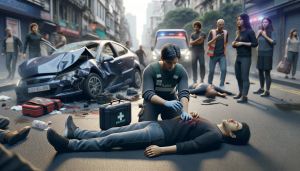
Recognizing the Significance of Medical Assistance
Medical assistance could be the determining factor between life and death when dealing with traffic accidents. The immediate medical attention victims receive post-accident can drastically impact their recovery rate. Learning basic first aid techniques and understanding not to make certain medical missteps could prove crucial. Quick response times, appropriate reactions to injuries, and the ability to provide effective on-site medical support can make all the difference in these emergency situations.
Key Steps To Follow In Providing Medical Assistance
If you find yourself at the scene of an accident, your first step should be to ensure your own safety before attempting to assist others. Call for professional help immediately. While waiting for the ambulance, unless there is an imminent danger such as a fire, do not move casualties as this could worsen their injuries. Use basic first aid knowledge to assess the situation. If the victim is unconscious, check their airway to ensure it's clear and perform CPR if necessary. Remember that keeping calm is vital, as it will reassure the victim and enable you to clearly communicate with emergency services.
Mistakes To Avoid When Providing Medical Assistance
While the urge to help is commendable, it's quintessential to note that certain actions can inadvertently cause harm. Most notably, avoid moving injured persons unless necessary for their immediate safety, as sudden movements can exacerbate spinal or neck injuries. Do not attempt to remove any embedded objects at the scene, as this can lead to increased bleeding or further internal damage. Additionally, refrain from administering food, drink, or medication unless explicitly directed by a medical professional, as they may interfere with medical procedures.
Educating Yourself About First Aid Practices
Being educated about first aid practices can empower ordinary individuals to take decisive, potentially life-saving actions. Familiarize yourself with various first aid skills, such as CPR, controlling bleeding, and recognizing symptoms of shock. Take advantage of local first aid courses or online resources to equip yourself with the necessary knowledge. Remember, your actions may be the decisive factor between life and death at a traffic accident scene.
Importance of Psychological Support During Medical Assistance
Medical assistance doesn't only encompass physical aid but also includes psychological support. Traffic accidents can be severely traumatic for victims, leading to shock or panic. An important element of initial medical assistance is reassuring the victims, keeping them calm, and avoiding unnecessary stress. Communicating clearly about what has happened and the steps you are taking can help keep the victim mentally stable until professional help arrives.
Legal Implications and Necessary Actions Post-Accident
Understanding Legal Responsibilities
In any traffic
Accident, understanding the legal responsibilities is crucial. Legal obligations can differ based on the location and the situation of the accident. Generally, all parties involved in an accident are legally required to stay at the scene. Fleeing may lead to hit-and-run charges that carry serious penalties. Additionally, providing aid to injured individuals is another responsibility, where conditions permit. Consulting with a legal professional after the accident can provide more specific guidance.
Reporting the Accident
In many jurisdictions, it is a legal requirement to report a traffic
Accident to the police, especially if it involves injuries, fatalities, or significant property damage. After ensuring safety and administering first aid, it's important to report the accident promptly. This will also initiate the official record of the incident, which can prove useful in any subsequent claims or legal actions.
Exchange and Collection of Information
Collecting and exchanging information at the accident scene is crucial. This often includes obtaining details such as the names, contact information, insurance details, and vehicle information from all drivers involved. Photos of the location, damage, and any visible injuries can also be helpful. This documentation will support the accuracy of statements given to law enforcement officers, insurance agents, and potentially in court.
Insurance Notifications and Claim Filing
When feasible, it's advisable to notify your car insurance company about the accident as soon as possible. This notification should provide the basic facts of the incident. Following this preliminary notification, a more detailed claim will need to be filed, which will typically include any photos, witness testimonies, and an official police report. Remember, being truthful and accurate is critical in these reports.
Navigating Subsequent Legal Proceedings
In some cases, traffic accidents may give rise to legal proceedings. These might involve disputes over responsibility for the accident, questions over insurance payouts, or even criminal charges. Having a legal representative is advisable in such cases. They can guide through the process, advocating on your behalf, and helping ensure that your rights are protected.
Long Term Care and Rehabilitation for Accident Victims
Understanding Long-Term Care
Long-term care for
Accident victims often involves a mix of medical, personal, and social services to meet the physical, functional, and emotional needs of patients. This could include assistance with activities of daily living, such as food preparation, personal grooming, and medication administration. Depending on the severity of the injury sustained from the traffic accident, long-term care may be needed for months, years, or even a lifetime.
Role of Rehabilitation in Recovery
Rehabilitation is an essential element in the recovery of
Accident victims. It aims to help the patient regain their independence and achieve the best possible quality of life. Physical therapy, occupational therapy, and speech therapy are just some of the disciplines involved in rehabilitation. Therapists work with the patient, helping rebuild strength, coordination, cognitive functions, and mobility that may have been affected by the traffic accident.
Choosing a Suitable Care Environment
It's important to carefully consider the care environment for the accident victim. Some people may be able to receive care at home with the help of family members and professional caregivers. Others might require a stay in a specialized care facility such as a nursing home or rehabilitation center. The choice should be guided by the victim’s needs, the severity of their injuries, their potential for recovery, and the resources available.
The Emotional Aspect of Long-Term Care and Rehabilitation
The emotional well-being of accident victims is an integral part of their recovery. Long-term care can be stressful and frustrating, both for the patient and their loved ones. Psychological support and counseling can help cope with these feelings, facilitate acceptance of the new reality, and stimulate positivity and motivation during recovery.
Financing Long-Term Care and Rehabilitation
Lastly, it's essential to discuss how to finance long-term care and rehabilitation. These services can be costly, and not all expenses are covered by insurance. Financial planning should be initiated as soon as possible to avoid financial strain. Options might include personal savings, insurance payouts, governmental aid programs, or even fundraising initiatives.
Tips for Prevention and Preparedness for Traffic Accidents
Maintaining Your Vehicle
Regular maintenance of your vehicle significantly reduces the chances of unexpected failures that could lead to accidents. Everything from tire pressure, brake fluid, lights, mirrors to windscreen wipers should be checked regularly. Additionally, ensure your car is serviced by a professional at the intervals recommended by the manufacturer.
Staying Alert and Focused
Negligence and lack of focus are two common causes of road accidents. Always stay highly attentive while driving. This includes avoiding using your phone while driving, even with hands-free devices. Keep your mind and eyes on the road at all times. Furthermore, never drive when you're feeling drowsy or under the influence of alcohol or other substances that impair your ability to drive safely.
Understanding and Following Traffic Rules
Knowledge, understanding and adherence to traffic rules is crucial in preventing traffic accidents. This includes obeying traffic signals, following speed limits, using turn signals appropriately, not tailgating and respecting other drivers on the road.
Improving Driving skills
Enrolling in advanced driving courses can enhance your driving skills and knowledge. These courses not only cover defensive driving techniques but also teach you how to react correctly during emergencies, thus reducing the risk of accidents.
Prepare for Emergencies
Despite taking all precautions, traffic accidents can still occur. It's important to be prepared for such circumstances. Have an emergency kit in your vehicle that includes first aid supplies, a fire extinguisher, warning triangles, and a flashlight. Also, learn basic first aid and CPR techniques as it could save someone’s life before the paramedic arrives at the
Accident scene.
Conclusion
The readiness to assist someone who has experienced a traffic accident can profoundly impact their path to recovery. By adhering to these outlined steps and extending your support and aid, you can offer invaluable comfort and assistance during what can be an immensely trying period. Whether it's offering a listening ear, aiding with logistical matters, or simply being present in their time of need, your actions can play a pivotal role in helping them navigate through the aftermath of the accident and facilitate their healing process.
Furthermore, your willingness to step up and offer assistance not only provides immediate relief but also underscores the importance of compassion and solidarity within communities. Your efforts exemplify the power of human connection and empathy, reinforcing the notion that collective support can make a substantial difference in individuals' lives during times of crisis. By standing alongside those affected by traffic accidents, you not only offer practical help but also demonstrate the strength of human kindness and solidarity, fostering a sense of resilience and community spirit amidst adversity.
Look for an attorney who has the right legal resources for your legal needs.
Contact us here on the
Warmuth Law website or through our hotline 888-517-9888.
Frequently Asked Questions (FAQ's)
1. Should I move the injured person from the accident scene?
It's crucial to prioritize the safety and well-being of the injured person. Unless there's an immediate danger such as a fire or ongoing traffic threat, it's generally advised to leave the injured individual where they are until medical professionals arrive. Moving them without proper training could potentially exacerbate their injuries, so it's best to wait for trained professionals who can safely assess and transport them to appropriate medical care.
2. What if the injured person refuses help?
If the injured person refuses assistance, it's essential to respect their decision while also gently encouraging them to accept medical aid. Emphasize the importance of being evaluated by a healthcare professional after an accident, as some injuries may not be immediately apparent. Providing information about potential risks and the benefits of receiving medical attention can help them make an informed decision about their health and well-being.
3. Can I provide first aid if I'm not trained?
While it's commendable to want to help, it's generally best to leave first aid to those who are trained and certified. Improperly administering first aid techniques could potentially worsen the individual's condition or cause further harm. However, offering emotional support, reassurance, and comfort can still be incredibly valuable in providing immediate assistance while awaiting professional help.
4. Should I admit fault or apologize at the scene?
It's important to refrain from admitting fault or apologizing at the accident scene, as this could have implications for insurance claims or legal proceedings. Instead, prioritize ensuring everyone's safety and well-being by exchanging necessary information, assisting those in need, and cooperating with authorities. Focus on documenting the facts of the accident accurately and thoroughly, as this information will be crucial for any subsequent investigations.
5. How can I prepare myself to help in such situations?
To better equip yourself to assist in emergencies like traffic accidents, consider taking a basic first aid and CPR course. These courses provide essential skills and knowledge needed to respond effectively to medical emergencies, including assessing injuries, administering CPR, and providing basic first aid until professional help arrives. Additionally, familiarize yourself with local emergency services and protocols to ensure a swift and coordinated response in the event of an accident.




